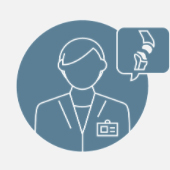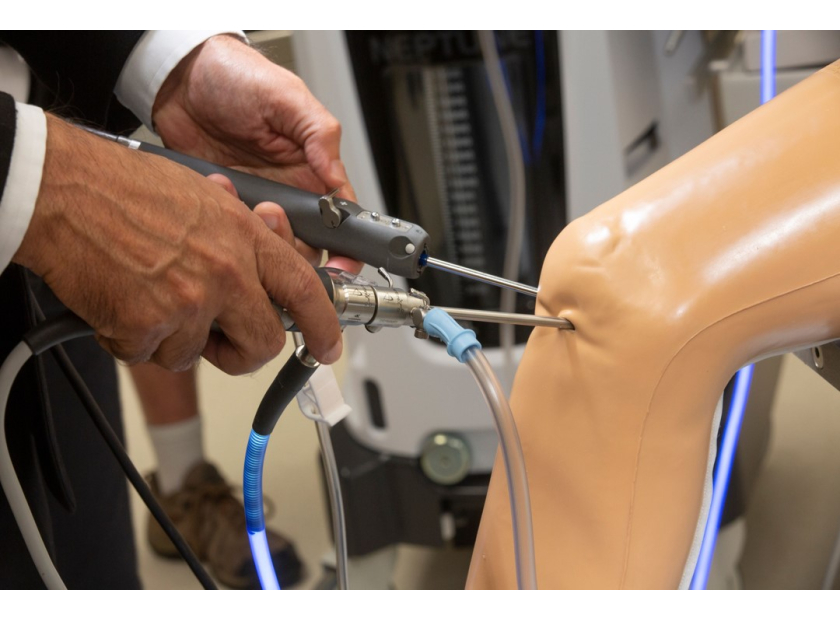How Training Arthroscopy Techniques Improves Surgical Skills
Reaching the peak of your arthroscopy technique powers is a steep climb. Research shows a surgeon will have to undertake around 250 procedures before they attain competence with the more complex skills—it is expected the specialist will need to complete more than 50 operations just to gain efficacy with diagnostic procedures.
Given that orthopaedic surgeons complete around 750,000 arthroscopic knee operations alone annually, the high demand for the broad catalog of arthroscopy procedures creates time pressures to graduate surgeons who can rapidly carry a working caseload into a $4 billion-a-year field.
It takes the right instruction, the right experience, and the right tools to achieve procedural standards that make complex arthroscopic best practices routine. There is a clear need for innovative arthroscopy technique training solutions that can carry a novice from introduction to competence without a heavy reliance on cadavers or single-use tissue models.
Arthroscopes of Many Purposes
Given that arthroscopy techniques are used to explore all the major joints of the body, most notably the shoulder, knee, and ankle, the technology to properly prepare surgeons needs to reflect both the variety of settings and the different procedures. Interventions such as ligament repair and reconstruction require a separate set of skills from those associated with successful diagnostics, for example. Training technologies, therefore, need to be reliable and repeatable, cost-effective, transferable, and scalable from basic mechanical operation through to complex surgical interventions.
Recreation of the dynamics of human joints also offers unique challenges to engineers designing the next generation of models. Rapidly evolving arthroscopy techniques have to be accommodated within a hands-on setting that:
- Encourages authentic responses
- Simulates outcome stakes
- Includes a multidisciplinary environment
- Operates within time/cost constraints
These pressures have resulted in the development of several approaches that have proven effective in reducing the time to surgical proficiency.
Emerging Arthroscopy Technique Training Models
The digital revolution that has taken hold across the broader society since the turn of the century has also influenced the medical training field. Combined with a reduction in residency work hours, these technical advances have led to the pursuit of more effective training models.
Educators have long faced procurement, cost, and efficiency challenges when relying on cadaveric training models. The new focus is on non-tissue simulations that are designed to encourage specific learning and are highly reliable and reusable.
Some success has been achieved using virtual reality models, with recent research demonstrating improved outcomes for students when moving from computer-generated programs to Sawbones models.
This mix of technologies offers obvious psychomotor advantages over text or video-based instructional videos and can be customized to suit specific educational goals. The engineered models offer a greater lifespan than tissue-based models, and they can be built to work in several different modes to stimulate student progression.
Importantly, the tactile nature of custom models provides a clinical simulation robust enough to improve arthroscopy techniques.
How Training Improves Arthroscopy Techniques
Simulation provides a safe and ethical way for students to refine their arthroscopy skills before entering the operating room. Recent research has found simulation training is a valuable tool for training future generations of orthopaedic surgeons. Using tactile models helps to:
- Reduce operating times
- Improve camera navigation
- Develop economy of movement
- Decrease the incidence of complications
- Improve repair and reconstruction efficacy
- Improve suturing tasks
- Encourage non-surgical teamwork
Such practical surgical benefits are further enhanced by the potential cost, procurement, and longevity advantages of using engineered models. If produced to the leading practice of LEAN engineering, which prioritizes the purpose of models during the manufacture, such models can carry value throughout a novice’s education.
A FAST Solution That Grows with the Student
There are training solutions available that aim to progress students through advancing arthroscopy techniques within the same model. The Fundamentals of Arthroscopy Surgery Training program (FAST) is designed around a three-dimensional “bubble” workstation used to improve the psychomotor skills needed for primary cutting, grasping, moving, and tying movements. This model has the advantage of evolving along with student advancement as the casing can be used in both transparent and opaque settings. As with the leading non-cadaveric models, it is completely reusable, and in this case, requires no special set up or clean up.
This program’s innovation lies in its flexibility. Rather than a static model that can be mastered only once and then needs to be replaced with increasingly difficult—and costly—challenges, it has a prolonged lifespan.
There are, however, still many other arthroscopy techniques within the treatment and diagnostic educational settings that aren’t perfectly suited to such a device. In those instances, it is possible to seek out a custom solution.
Create Your Own Training Solutions for Arthroscopy Techniques
The breadth, complexity, and high demand of the arthroscopic field creates diverse educational niches that need servicing. To match the curriculum with the perfect model takes a design accuracy of the highest standards. Fortunately, there are engineers available that produce models to type and at scale.
Highly detailed models of the elbow, ankle, or hip, for example, immerse students in a multi-sensory exploration of the procedures that will dominate their caseloads. Rich anatomical detail, realistic texture, fluidity and pressure variance, and the cause and response challenge of haptic feedback recreate the stakes of live surgery without the risks of patient harm.
Advanced models also give novices the room to grow into their competencies by introducing varied conditions and settings that better reflect the range of presentations graduates will encounter in clinical training and professional work.
The high demand for arthroscopy services is in direct opposition to the hundreds of hours of experience surgeons require to produce the best patient outcomes. Any innovation in the creation and execution of new training techniques that reduces that tension can potentially have a positive impact on the industry.
As the leader in the creation of innovative medical training models, Sawbones is your partner in developing solutions that effectively transfer student lessons to the operating room. Our engineers can produce orthopedic, training, and biomedical models that meet your educational standards and provide practical value. Contact us today online or call us at 206-463-5551 to begin creating a better learning environment.

If you're seeking something you can't find on our website, our sales team is happy to help. We can either direct you to the right model or provide a free quote on the right custom project to meet your needs. Discover options with our clear bone models, laminated blocks, custom displays, or other machining projects.








